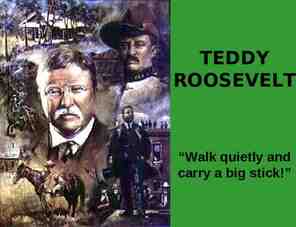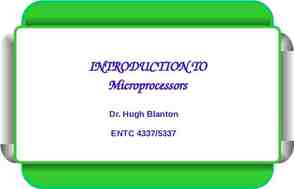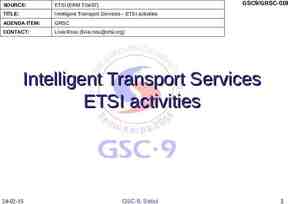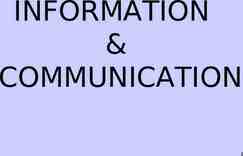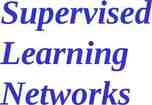2-1
69 Slides3.09 MB

2-1

Relationship Marketing: Where Personal Selling Fits McGraw-Hill/Irwin Chapter 2 Copyright 2006 by The McGraw-Hill Companies, Inc. All rights reser

Chapter 2 2-3

Main Topics What Is the Purpose of Business? What Is Marketing? Customer Orientation’s Evolution Marketing’s Importance in the Firm Essentials of a Firm’s Marketing Effort Relationship Marketing Relationship Marketing and the Sales Force Levels of Relationship Marketing Chapter 2 2-4

Main Topics Partnering with Customers The New Consultative Selling E-Selling: Technology and Information Build Relationships What’s a Salesperson Worth? The Key to Success Chapter 2 2-5

In Chapter 2 We Will See What is Meant by the Terms. Business Marketing Product, Price, Place, Promotion Personal Selling 2-6

The Purpose of Business is to: Increase the general well being of humankind through the sales of goods and services 2-7

This Requires Making a profit in order to operate the business and to provide beneficial products to the marketplace 2-8

Profit is a Means to an End Profit is needed to serve humankind Profit is needed to operate the business Profit is needed to provide products to the marketplace 2-9

The Two Basic Functions of Business Production of goods or creation of services Marketing those goods and services 2-10

What is Marketing? Marketing is a process of planning: The conception, pricing, promotion, and distribution of goods, services, and ideas To create exchanges that satisfy individual and organizational objectives 2-11

Customer Orientation’s Evolution The production concept The selling concept The marketing concept 2-12

The Production Concept Companies were production oriented We know what people want – they want our product. 2-13

The Selling Concept Characterized by product demonstrations and unsophisticated sales techniques Emphasis on the product Product created and then sold Management is sales-volume oriented Stresses needs of the seller 2-14

The Marketing Concept Emphasis is on customer’s wants Customer’s wants drive production Management is profit-oriented Planning is long-term Stresses wants of buyers 2-15

Exhibit 2-1: The Difference Between Selling and Marketing Concepts 2-16

Marketing’s Importance in the Firm Marketers have four main objectives: Maximize the sales for existing products in existing markets Develop and sell new products Develop new markets for existing or new products Provide quality service to ensure repeat business 2-17

Exhibit 2-2: The Marketing Group is the Link Between Customers and the Organization 2-18

Product: It’s More Than You Think A good is a physical object that can be purchased A service is an action or activity performed for a fee Value-added refers to benefits received that are not included in the purchase price of a good or service 2-19

Exhibit 2-3: Four Elements of the Marketing Mix and Four Promotion Activities 2-20

Exhibit 2-4: Examples of Business-To-Business Value-Adding Help customer reduce process costs Improve yields Reduce waste (through recycling, etc.) Reduce rework Reduce direct labor Reduce indirect labor (inspection, handling) Reduce energy costs 2-21

Exhibit 2-4: Examples of Business-To-Business Value-Adding Help customer reduce inventory Consignment Just-in-time delivery Reduced cycle time 2-22

Exhibit 2-4: Examples of Business-To-Business Value-Adding Help customer reduce administrative costs Simplify billing Improve tractability Use electronic data interchange 2-23

Exhibit 2-4: Examples of Business-To-Business Value-Adding Improve safety for customer and his employees Reduce price to the customer Substitute certain product components Improve company processes and supplier processes 2-24

What is Meant by the Term “Product?” A product is a bundle of tangible and intangible attributes, including package, color, and brand, plus the services and even the reputation of the seller 2-25

The Term “Product” May Refer to a Good or Service Examples Goods - a physical object for sale Automobile Cell phone Prescription medicine Services - an action or activity done for others for a fee Automobile repair Wireless phone plan Health insurance 2-26

The Good and the Service: Automobile - repair services Cell phone - wireless phone plane Prescription medicine - health insurance 2-27

We Will Use the Terms Follow-up and Service. What do They Mean?* Follow-up refers to maintaining contact with a customer in order to evaluate the effectiveness of the product and the satisfaction of the customer (More on this in Chapter 14) 2-28

The Term “Service” May Refer to A: Product, as insurance and advertise which is sold by someone Service, as customer service which is an activity offered by a seller in conjunction with the purchase of a product, such as delivery, repair, credit cards accepted, 800 telephone number, web site, salesperson available to help customer (More on this in Chapter 14) 2-29

Customer Service by the Salesperson Include: Salesperson goes to customer’s business to help: Resell products Customer use product Handling complaints Return damaged products Provide samples Suggest further business opportunities (Above discussed in Chapter 1) 2-30

People Buy More Than the Product People buy want-satisfaction as Image of owning as a Polo shirt vs. Wal-Mart shirt Dodge Viper* vs. Volkswagen Vanagon* What the product will do Its quality *products and associated images used for illustrative purposes only 2-31

There Are Two General Types of Products - Consumer and Industrial Products What is a consumer product? A consumer product is produced for, and purchased by, households or end consumers for their personal use What is an example of a consumer product? Toothpaste Television Clothes 2-32

There Are Two General Types of Products - Consumer and Industrial Products What is industrial product? An industrial product is sold primarily for use in producing other products. Industrial users are profit nonprofit organizations that buy good and services for one of three purposes* 1.To make other goods and services 2.To sell to consumer or other industrial users 3.To conduct the organization’s operations* 2-33

The Key Phrases That Differentiate Between Consumer and Industrial Products are: Consumer product - personal use Industrial product - producing other products What is an example of an industrial product? Airlines purchase airplanes Boeing sells their airplanes to airlines University buys computers 2-34

What Is Another Name for an Industrial Product?* Business product Organizational product 2-35

Price: It’s Important to Success Price refers to the value or worth of a product that attracts the buyer to exchange money or something of value for the product 2-36

Distribution Moves Products to Customers Three Customer Groups A household refers to a decision-making unit that buys for personal use A firm is an organization that produces goods and services A government is an organization that has two functions: The provision of goods and services to households and firms The redistribution of income and wealth 2-37

Consumer and Industrial Products are Often Distributed Through Resellers What are Resellers? Resellers, such as wholesalers or retailers, purchase products and then sell to organizations and/or individuals 2-38

What Is a Wholesaler? The Wholesaler (May Be Referred to as a Distributor) Primarily engaged in buying, taking title to, usually storing and physically handling goods in large quantities, and reselling the goods, usually in smaller quantities to Retailers Wholesalers Manufacturers 2-39

Exhibit 2-5: Examples of Distribution Channels for Consumer and Industrial Products 2-40

Promotion Tells People Promotion increases sales by communicating product information to potential customers The four basic components of a firm’s promotional effort are: (PAPS) Personal selling Advertising Publicity Sales promotion 2-41

Exhibit 2-6: Promotion Activities Personal Selling is personal communication of information to persuade Advertising is non-personal communication of information paid for by an identified sponsor such as an individual or an organization (Methods include TV, newspapers, catalogs and the radio) 2-42

Exhibit 2-6: Promotion Activities Publicity is non-personal communication of information that is not paid for by an individual organization. Information appears in media such as television, radio and newspapers Sales promotion involves activities or materials used to create sales for goods or services 2-43

Exhibit 2-6 2-44

Exhibit 2-6: Promotion Activities Two types of sales promotion Consumer - includes free samples, coupons, contests, and demonstrations to consumers Trade - encourages wholesalers and retailers to purchase and to sell aggressively using devices such as sales contests, displays, special purchase prices, and free merchandise 2-45

Exhibit 2-7: Examples of Each Marketing Mix Element 2-46

Relationship Marketing Relationship marketing is the creation of customer loyalty Targets a major customer that it wants to sell to now and in the future Establishes a long-term collaborative relationship 2-47

Relationship Marketing and the Sales Force Four basic questions used as guidelines in defining the role of the sales force: 1.How much selling effort is necessary to gain and hold customers? 2.Is the sales force the best marketing tool? 3.What type of sales activity will be necessary? 4.Can the firm gain strength relative to its competition with its sales force? 2-48

Relationship Marketing and the Sales Force Personal selling builds relationships! Two main functions of personal selling are to: Generate revenue Provide services to satisfy customers Flexible in operation Focused on prospective customers Results in actual sales 2-49

Relationship Marketing and the Sales Force Salespeople implement relationship marketing 2-50

Summary of Relationship Marketing and the Sales Force What is the role of the sales force in the marketing effort? Personal selling builds relationships Salespeople implement relationship marketing 2-51

Exhibit 2-8: Examples of Various Marketing and Sales Methods Used to Sell Mid-Sized Computers Business-To-Business 2-52

Three Levels of Relationship Marketing Transaction selling Relationship selling Partnering 2-53

Three Levels of Relationship Marketing Transaction selling: customers are sold to and not contacted again Relationship selling: the seller contacts customers after the purchase to determine if they are satisfied and have future needs Partnering: the seller works continually to improve its customers’ operations, sales, and profits 2-54

rs hi p Exhibit 2-9: Dependence Increases as Relationships become More Important Low Tr a ns a ct io na l R el at io Relationships ns hi p Pa rtn e High Low Dependence 2-55 High

Partnering with Customers Encourages both the buyer and seller to share information Two companies work toward the same objective 2-56

Partnering, cont Components of partnering include: Individual excellence Importance Interdependence Investment Information Integration Institutionalization Integrity 2-57

Exhibit 2-10 2-58

Consultative Selling The process of helping the customer achieve strategic short and long-term goals through the use of the seller’s goods and/or services A highly interactive dialogue between a salesperson and a customer A balanced exchange of information 2-59

Three Consultative Selling Roles for the 21st Century 2-60

Three Roles of Consultative Selling The Team Leader Coordinates all of the information, resources, and activities needed to support customers before, during, and after the sale The Business Consultant Gives advice and service. Uses internal and external resources to gain an understanding of the customer’s business and marketplace 2-61

Three Roles of Consultative Selling The Long-Term Ally Creates a “win–win” situation. As the customer’s sales and profits grow, so do the salesperson’s The ability of a salesperson to fulfill the role of long-term ally is a pivotal factor in determining whether a sales transaction is just a transaction or the beginning of a relationship 2-62

The Customer-Seller Relationship Gap May occur when the salesperson’s interest in the customer declines Usually after the sale Yet the customer’s interest increases after the sale This is one reason why service after the sales is so important 2-63

What’s a Salesperson Worth? “Worth” is dependent upon at least three factors: What the salesperson costs How much he/she sells The profit margin Salespeople make a valuable contribution to the success of their employer Selling closes deals and generates the revenue to keep the organization in business 2-64

The Key to Success Knowing and satisfying target customers with competitively superior products and service Marketing is the company function that defines customer targets and the best way to satisfy their needs and wants competitively and profitably Marketing’s main customer contacts are salespeople 2-65

Exhibit 2-13: Marketing and Personal Selling Provide Service to Customers 2-66

Summary Selling is only one part of the overall marketing activities of the firm Marketing is an exchange process between buyers and sellers The marketing concept is based upon a firm’s desire to increase sales while anticipating and satisfying consumer needs 2-67

Summary, cont The marketing mix is comprised of four variables: Product Distribution Promotion The role of the salesperson is considered carefully in the firm’s determination of the promotional aspect of its marketing mix 2-68

Summary, cont Consultative selling focuses on the salesperson’s ability to provide customer satisfaction by adding value to the sales transaction 2-69

